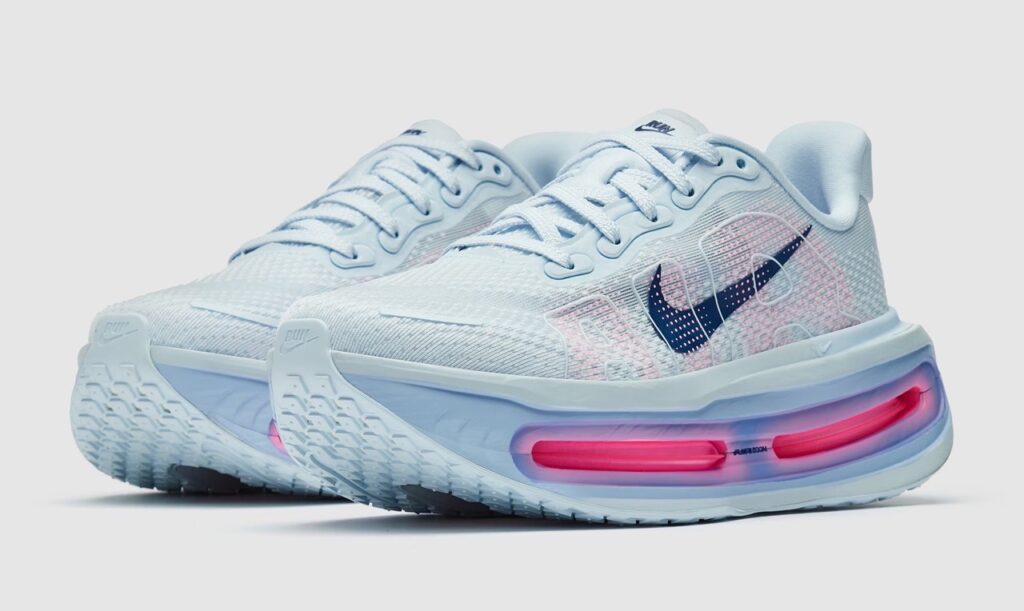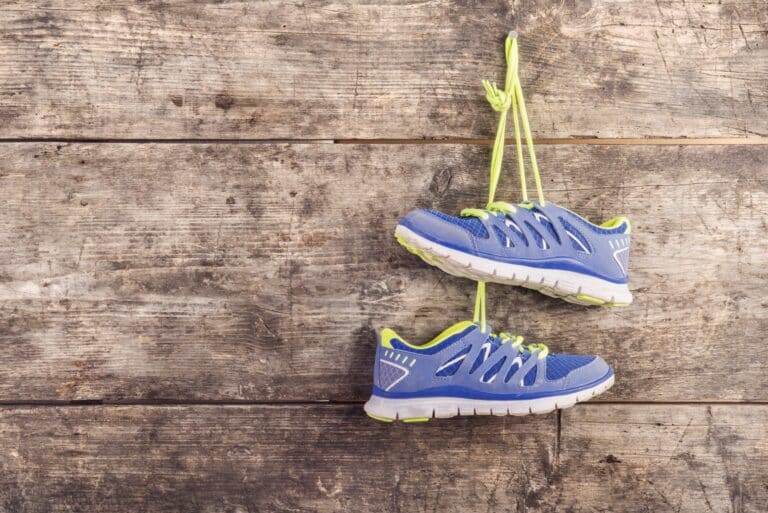


Whether you are a seasoned runner or just starting out, one of the most essential tools for any runner is a good pair of running shoes. With every stride, your feet hit the ground with a force that’s several times your body weight. This repetitive motion can cause wear and tear on your shoes, leading to discomfort and even injuries if not replaced promptly.
So, how long do running shoes last and when is it time for a new pair?
The lifespan of your running shoes depends on several factors such as the type of shoe, frequency of use, and intensity of your training. On average, a pair of running shoes can last anywhere from 300 to 500 miles (482 to 804 kilometres) before needing to be replaced.
However, this number is just a general guideline and may vary depending on individual factors. For instance, if you are a heavier runner or have a more aggressive running style, your shoes may wear out faster. On the other hand, lighter runners or those who primarily run on softer surfaces may get more miles out of their shoes.
Ultimately, it is recommended to keep track of the mileage on your shoes and replace them every 6-12 months, depending on your running habits.
As previously mentioned, the mileage on your shoes is a key factor in determining when to replace them. Typically, a pair of running shoes can endure between 300 to 500 miles (482 to 804 kilometres) before requiring a replacement. Therefore, it’s important to keep track of how many miles you have put on your shoes. A good tip is to write the date of purchase inside your shoes so you can easily reference it.
Tracking your mileage can be done manually by recording every run or by using a running app that automatically tracks your mileage.
Aside from your personal running habits, other factors can affect the lifespan of your running shoes. Here are some things to consider:
With these factors in mind, it’s important to regularly assess the condition of your running shoes and replace them when needed.
If you are thinking, how long do running shoes last? Here are some signs that they may need changing:
If you notice any of these signs, it may be time to replace your trusty pair of running shoes. Remember, taking care of your feet is crucial for any runner, so don’t hesitate to replace your shoes when needed.
Aside from the signs of shoe wear mentioned above, there are a few other ways to tell if it’s time for new running shoes. One common method is to do the “twist test” – simply hold your shoe at both ends and twist in opposite directions. If you feel significant resistance or your shoe easily twists, this could be a sign that the cushioning and support have worn out.
Another way is to look at the wear pattern of your shoes. Over time, the soles will wear down in specific areas depending on your running style and gait. If you notice uneven or excessive wear, it’s a good indication that your shoes have reached their limit.

Here are five telltale signs that it may be time to get a new pair of running shoes:
If you can relate to any of these signs, it’s best to err on the side of caution and replace your running shoes.
When it comes to finding the perfect pair of lightweight shoes, nothing beats a professional fitting. Running speciality stores often offer this service, where a trained staff member will assess your foot size, arch type, and running style to recommend the best shoe for you.
This is especially important if you have any pre-existing foot conditions or injuries that may require a specific type of proper support. A professional fitting can ensure that you are choosing the right shoe for your individual needs, with plenty of room in the toe box to help prevent future problems.
Another tip for prolonging the lifespan of your running shoes is to rotate between multiple pairs. This allows each pair to fully dry and decompress between runs, reducing the risk of wear and tear. It also provides a change in support and cushioning, which can help prevent injuries.
Instead of throwing away your old running shoes, consider donating them to a shoe recycling program or organisation. Some programs will refurbish the shoes and donate them to those in need, while others will break down the materials for reuse in various products. It’s an excellent way to give back and reduce waste at the same time.
Taking care of your running shoes can help them last longer and save you money in the long run. Here are some tips to extend the life of your shoes:
By following these tips and regularly assessing the condition of your running shoes, you can ensure that you are always running in comfortable and supportive footwear.
As tempting as it may be to wear your running shoes for everyday activities, it’s best to avoid doing so. This is because the cushioning and support in running shoes are designed specifically for the repetitive impact of running, not for walking or standing. Wearing them for other activities can cause the materials to break down faster and reduce their overall lifespan.
While it’s essential to have the right shoes for running, pairing them with the right socks is equally important. Avoid cotton socks, as they can trap moisture and cause blisters. Instead, opt for moisture-wicking materials like nylon or polyester to keep your feet dry and comfortable during runs.
There is no set timeline for when running shoes should be replaced. It ultimately depends on a variety of factors, such as the frequency and intensity of your runs, your body weight, and the type of terrain you run on.
However, as a general guideline, most experts recommend replacing running shoes every 300-500 miles or every 6-12 months. Marathon runners may need to replace their shoes sooner.
Don’t wait until your current running shoes are causing discomfort or pain to invest in a new pair. Use the signs mentioned above to assess when it’s time for a replacement, and remember to get fitted by a professional for the best results. Visit Running Direct UK / Running Direct USA today to explore their wide selection of high-quality running shoes from top brands. By taking care of your feet, you can continue to enjoy running and stay injury-free for years to come. So, don’t wait any longer — treat yourself to a new pair of running shoes today!
Ready for a speedy marathon challenge? Take a read of our 4 Hour Pace Marathon blog.
Join our mailing list to stay up to date with the latest UK running events, training tips, and exclusive offers on running products. Rest assured, we value your privacy and would never dream of selling your address. Sign up now…
Share this article
As humans, we all experience moments of grief and stress at some point in our...
Running a marathon is an incredible athletic feat that many people aspire to achieve. However,...
For many people, the thought of running conjures images of sprinting at top speed, pushing...
As runners over 40, we often focus on mileage, speed, and endurance. But there’s a...
Welcome to our Coach the Run’s elite marathon training plan. If you are looking to...
Plyometrics are exercises that use explosive movements like jumping and bounding to enhance muscle power...
We’re here to make sure you’re up-to-date with the latest running tips, events and product discounts – we’ve always got your back! Rest assured, we value your privacy and would never dream of selling your address.
BONUS: Sign up today and receive a FREE code for our Sub-4-Hour Marathon Plan